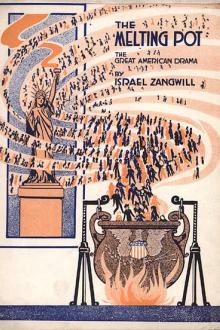No Modernism Without Lesbians, Diana Souhami [love books to read txt] 📗

- Author: Diana Souhami
Book online «No Modernism Without Lesbians, Diana Souhami [love books to read txt] 📗». Author Diana Souhami
H.D.’s breakdown
Neither Bryher nor H.D. wanted to remain in post-war Britain. They talked of going to America. But H.D. was not well. She was paranoid. She delved into spiritualism, held seances and thought she heard urgent messages warning of an imminent third world war. In the spring of 1946 she tore the bookplates out of her books, moved furniture into the hall and climbed on to the roof of 49 Lowndes Square, intending to throw herself to the street. Instead, she threw down a fur coat Bryher had recently given her.
Bryher wrote: ‘I am not frightened of mental illness and because of this I am able to understand and handle certain cases during the difficult hours between their treatments.’ Twenty-eight years of partnership with H.D. had taught her about psychosis. She chartered a plane and flew her to a clinic in Switzerland: Dr Brunner’s Nervenklinik in Küsnacht, by Lake Zurich.
She was advised by H.D.’s doctors not to visit or write to her. The medical opinion was that because H.D. had seemed distressed by Bryher in London, separation would help her restore. But not seeing Bryher or hearing from her terrified H.D. even more. She feared she was dead like Frances Gregg, or in mortal danger. For herself, she wrote to friends that she had meningitis and was staying in a romantic eighteenth-century manor house with roses brought from Versailles. To Bryher, she wrote that she was frightened of being charged with insanity. She asked her to come with armed men to rescue her but feared that then they would both be entrapped. She lost forty pounds in weight.
Bryher was criticized for being controlling, but at the root of all her intervention was the desire to do what was best. Without her, H.D. would probably be dead. She employed Walter Schmideberg as a psychiatrist for her and as a companion for herself.
H.D.’s letters from the clinic showed her need for Bryher. ‘My frenzy was due entirely to the separation and anxiety’, she told her. She thought her room at the clinic had been wired and her telephone line cut. She imagined all the apparatus of war directed at her: gun shots, police dogs and whistles and gas fumes. Never once did her paranoia direct itself towards Bryher. She wrote to her:
I had a sort of ‘shock-treatment.’ They locked me in the bed-room, with window & shutters barred. There were 5 of us, 3 hefty men and a nurse. One of the men left with the nurse, when I refused an injection. I thought they were trying to kill me. I suppose this is ‘dementia praecox.’ I begged for a few minutes. An enormous prize-fighter, weighing a ton, ordered me to lie down on the bed. I refused & tried to dodge them. I have been severely shocked: if that is what they wanted to do, they succeeded. It was worse or ‘better’ than the most lurid film. They spotted my sheets with some sort of real or chemical ‘urine’. I did not find this until long after mid-night, when I opened the bed. The stench was frightful—’bed-wetting’ child memories, I presume! I must leave here. They did not kill me. I refused food, as I was heart-broken about you & pup, so then, I suppose they wrote me up as ‘paranoia’ or ‘schiz.’ and for a time I lived on your coffee and cigarettes. I do not know why I am here. There is T.B. on the towels. I am also apparently mad. However, we will laugh soon & I feel, dear Fido, I can now discuss with you intelligently, the Tibetan Book of the dead.
By October, H.D. was calm enough for Bryher to explain to her why she had kept away:
When you were so very ill in London you seemed to worry whenever I was there, so Dr Carroll said I must not be with you then or write, but all the time I was in touch with Dr Brunner to see how you were. I wrote the moment it was felt you were well enough for letters.
Bryher visited with Walter Schmideberg, whom H.D. called The Bear. It was a relief to Bryher that H.D. was in a safe and peaceful place and that she did not have to take on the impossible burden of caring for her alone. She visited her most days for lunch or tea or to do a bit of shopping. She gave her an additional settlement of £70,000 and an annual allowance of £2,500, though H.D. spent little or nothing beyond the fees for the clinic.
Bryher was unsettled too and, apart from Schmideberg, no one looked out for her. She could not return immediately to Kenwin. Refurbishment was needed and the heating pipes had rusted. Her parents were dead, she was not on speaking terms with her brother, H.D. was gripped by psychosis and Bryher saw very little of Kenneth Macpherson who did not visit H.D.
Bryher flew to America in January 1947 to discuss divorce details with him. He was sharing a house with Peggy Guggenheim and Bryher found him ‘very sad, disillusioned and more mature’. He seemed to have given up all artistic ambition. When the divorce was finalized in February, he moved with the photographer Islay Lyons, who became his long-term partner, and ‘that old roué’ Norman Douglas to the Villa Tuoro in Capri. Bryher financed their ménage. She also gave him an apartment in Rome, near the Coliseum.
She moved back to the Villa Kenwin in the spring of 1947. Elsie Volkart resumed as her housekeeper. For ten years, Schmideberg was Bryher’s paid companion there. It was as if Bryher felt





Comments (0)